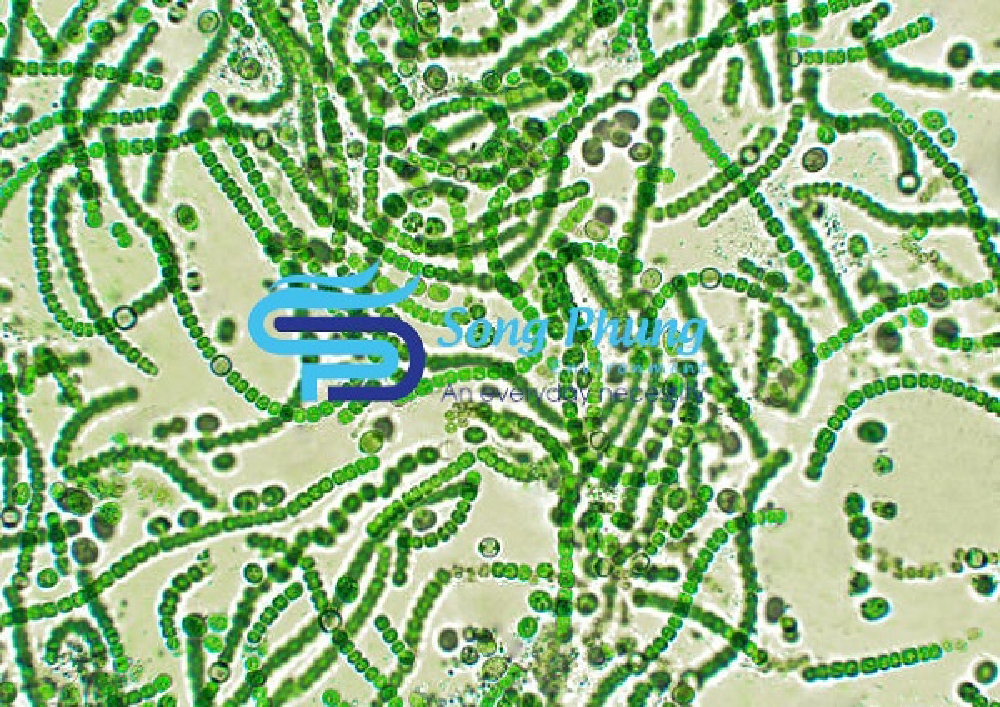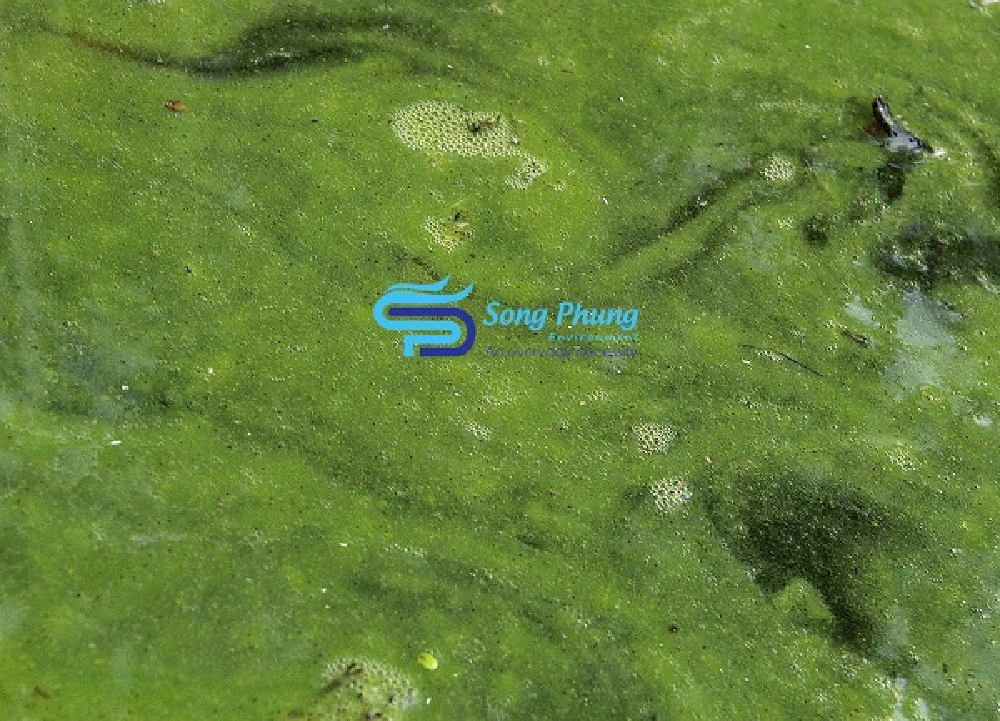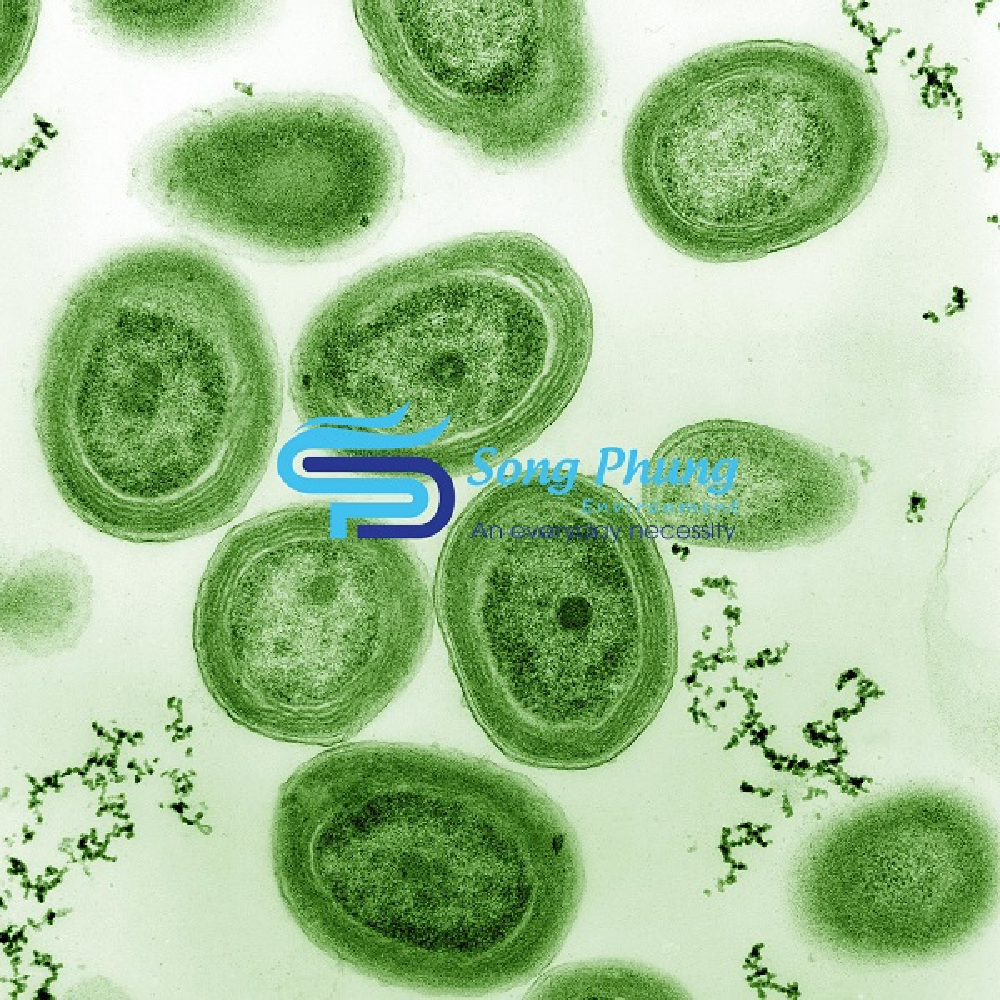What are cyanobacteria? Features, structure, application
Cyanobacteria are small organisms that live in water, using sunlight to produce their own food. In a warm, nutrient-rich environment with slow-moving water, cyanobacteria will grow rapidly, flourishing in ponds and lakes, adversely affecting the environment and human health. To prevent the growth of blue-green algae in your water, you need to regularly change the water, use a water filtration system for ponds, lakes and domestic water sources.
What is cyanobacteria?
Cyanobacteria are microscopic organisms found in nature. They live in water and use sunlight to produce their own food. In a warm and nutrient-rich environment, they grow quickly, blooming in lakes and other bodies of water

Characteristics of cyanobacteria
Cyanobacteria are a group of organisms capable of nitrogen fixation and photosynthesis. In this group, the photosynthetic organisms that have color are erythro-phycocyanin, cyanophycin and allophycocyanin. Their bodies vary from unicellular to cellular or filamentous heterocellular. They fix nitrogen in the air, under aerobic or anaerobic conditions, by means of heterocysts.
If in warm weather, sunlight, excess nutrients, slow water movement, cyanobacteria will begin to multiply very quickly. They can appear at any time, especially in late summer or early fall.

Structure of cyanobacteria
Nutrient cells
Form
Nutrient cells of cyanobacteria are spherical, elliptic, wide or elongated, only about 1 micrometer in diameter, similar to synechococcus. However, they also have trophic cells more than 30 micrometers across, like oscillatoria.
Cell wall
The cell wall of cyanobacteria is quite thick, consisting of 4 layers. The outside is usually mucinous, forming metabolic cells around cells, groups of cells or whole fibers. The cell wall of cyanobacteria is mainly formed by murein – a glucosamine protein synthesized by alanine d, diaminopimelic acid and d-glutamic acid. Besides, their cell wall is also made up of cellulose.
Protoplasm
The protozoa of cyanobacteria is distinguished into two regions:
- Colored outer region (chromoplasm): Concentrate as ribo, sheets of thylakoids and other granules.
- The inner region (centroplasm) contains DNA.
The cellular substance includes:
- The small seeds, often arranged in long, horizontal walls, are cyanophycin granules.
- Glycogen (starch) granules are the main storage substances of blue-green algae, produced by photosynthesis.
- Air sacs (vacuoles):
- Under the microscope, at low magnification (x10), the air sacs are black, at high magnification they are purple-red.
- Under the microscope, gas vacuoles are cylindrical tubes, 70 nm in diameter. Different from the cell membrane, the membrane of the air vacuole contains 95% protein according to Jones and Jost, 1970. According to Smith and CSV, 1969, the protein of the air vacuole is similar to the protein of the superbug, the membrane does not have any pigment. This vacuole is made up of very small particles that grow and then become gas that diffuses across the membrane. Air vacuoles help to store gas, float, and block light.
Pigmentation
Only chlorophyll a (green), a group of carotenoids (including xanthophylls and hydrocarbons that are O2-containing derivatives), is orange, yellow, or red.
Additional pigments called phycobiliproteins (not located on thylakoids like chlorophyll, but in the spaces between the membranes), including c-phycoerythrin and c-phycocyanin, are present in high concentrations.
These two pigments follow their composition, which varies depending on the species and environment. Therefore, blue-green algae have many different colors to adapt to the environment.
Heterocellular
Heterocellular are special cells found in filamentous cyanobacteria that help fix nitrogen and nitrogen in the air through the enzyme nitrogenase. Nitrogenase will be inactivated by oxygen, so cyanobacteria can only fix nitrogen in an anaerobic environment.
Heterotrophs are thick-walled, transparent, double-walled cells that are devoid of oxygen and photosystem II (PS II). Therefore, heterocysts do not produce oxygen gas during photosynthesis. Heterotrophs develop from vegetative cells, so they are similar in shape to their parent cells, but larger. Heterocysts usually have 1 or 2 holes (at the ends that come into contact with the nutrient-containing cell). The distance of heterocysts on the fiber is affected by environmental factors. Under the light microscope, the heterocyst looks quite homogeneous (homogeneous), but under the electron microscope it has a yellow-green membrane system, due to carotene and chlorophyll a but lacks phycocyanin.
| Cell structure | Ratio | |
| Cyanobacteria | Bacteria | |
| Cell nucleus | 32% | 29% |
| Cell wall | 99% | 89% |
| Vacuoles | 45% | 49% |
| Plasma membrane | 12% | 7% |
| Cell substance | 71% | 62% |
| Organelles containing chlorophyll | 98% | 1% |
Classification of cyanobacteria
- Strawberry water hyacinth: Cyanobacteria species symbiotic in the leaves of mulberry flowers.
- Water hyacinth: Cyanobacteria species parasitic and symbiotic in water hyacinth leaves.
- Hydrangea: Cyanobacteria symbiotic in the leaves of hydrangeas.
Applications of cyanobacteria
Autotrophic cyanobacteria are important fixers of nitrogen in the food chain. They participate in the process of creating oxygen for the atmosphere and making food for fish. Cyanobacteria produce oxygen by splitting water during photosynthesis, a mechanism found in algae and plants today.
In November 2018, researchers from the Stevens Institute of Technology, New Jersey, USA successfully tested the creation of electrodes using fungi in combination with cyanobacteria. To capture the generated electricity, they covered the blue-green algae with a special material called graphene. Although the amount of voltage generated is quite small, with a system of many similar mushrooms, the scientists were able to generate enough energy to light a low-wattage light bulb.
Some types of microalgae contain substances of high biological value such as proteins, amino acids, unsaturated fatty acids, vitamins, antioxidants, and minerals. They help reduce inflammatory cytokines by inhibiting the NF-κB pathway in spleen cells and macrophages. At the same time, sulfated polysaccharides in blue-green algae also help promote the immune system, prevent blood clotting, cancer, thrombosis, mutation, anti-inflammatory and antibacterial.
The harmful effects of cyanobacteria
In addition to some beneficial cyanobacteria, they are also potentially dangerous.
Harmful (cyanobacterial) blooms, known as HAB or CyanoHAB, can use up all the oxygen in the water, blocking the sunlight that freshwater plants and animals need to survive. These toxins accumulate in aquatic products and seafood and affect human health. Some of the symptoms that people can get from cyanotoxin poisoning: fever, diarrhea, nausea, vomiting, skin irritation, rash, stomach cramps, sore throat, headache, muscle pain and joint pain.

How to limit the growth of cyanobacteria in water
In moderate amounts, cyanobacteria promote the growth of fish or other microorganisms in the water. If exceeded, cyanobacteria can adversely affect the environment and human health. Here are some measures to limit the growth of cyanobacteria.
- Regularly change the water for ponds and lakes.
- When cyanobacteria are present in excess, you need to use measures as directed by the Department of Agriculture (possibly using H2O2).
- For domestic water sources, you should use a water filtration system.
Above is the basic information about the characteristics, structure, application, harm and ways to limit the growth of cyanobacteria. If you want to buy water purification equipment for living and farming, Song Phung Environmental Company will be the perfect choice. Contact the hotline for advice and quick support!
Translator: Duong Nguyen Hoang Khang

